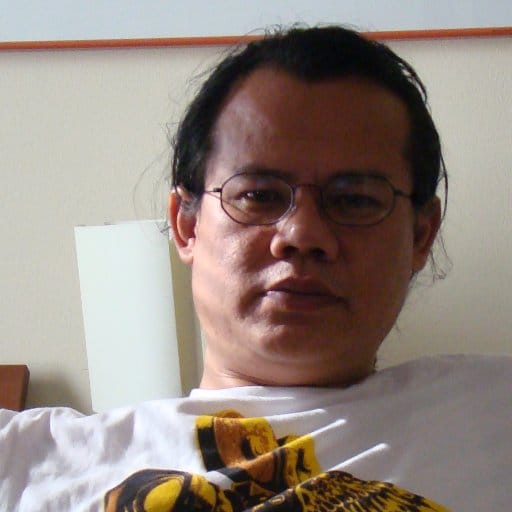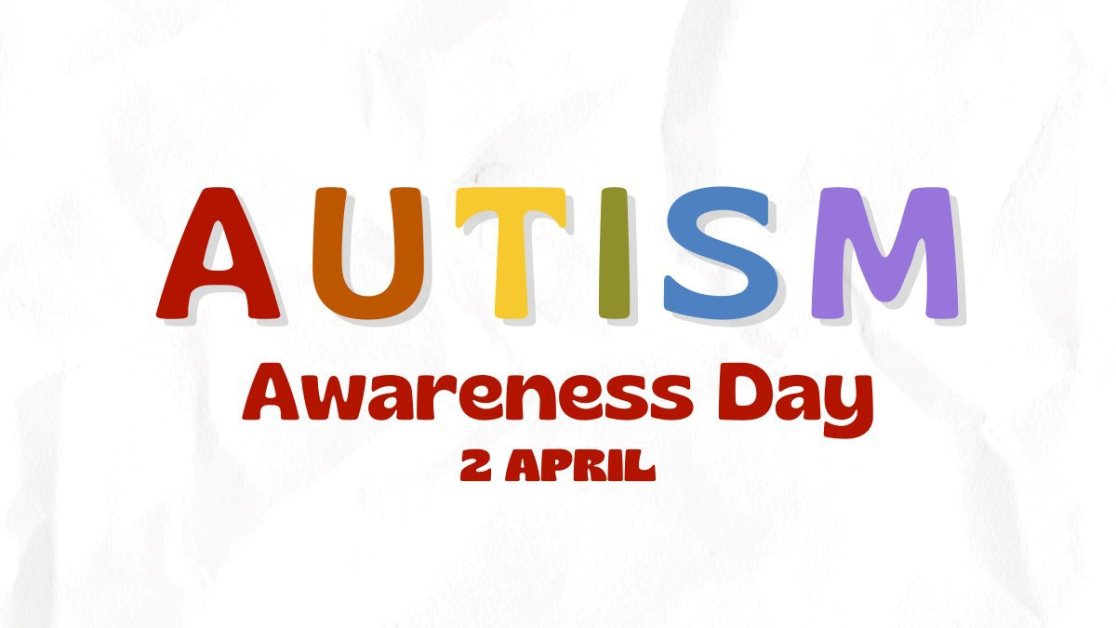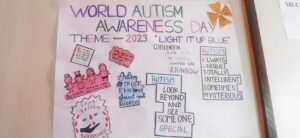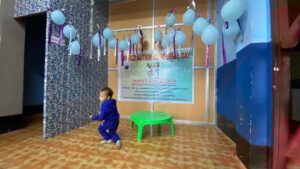The catchword is – Early Diagnosis, Early Intervention – for early treatment is important as proper care and services can reduce individuals’ difficulties while helping them learn new skills and build on their strengths
 Sunzu Bachaspatimayum
Sunzu Bachaspatimayum

Thokchom Pinky Devi, 37 years, was so thrilled when she gave birth to baby Pamsy as she always wanted her first born to be a baby girl. “A girl child is more caring, obedient, and relatively easier to handle than a baby boy especially when yours is a nuclear family,” Pinky confided. “Besides Pamsy would be the extra hand when I give birth to a son as my second born,” recalled the trained nurse what she felt when Pamsy was born in October 2019.
Unfortunately, the euphoria evaporated when baby Pamsy was diagnosed with Autism Spectrum Disorder (ASD) at the age of 2.6 years. Pamsy suffered from speech delay, and no eye contact, and exhibited repetitive behaviours such as licking walls, floors, and the washing machine.
When Pamsy started developing these unusual behaviours and persisted with them, Pinky consulted a pediatrician of the Regional Institute of Medical Sciences, RIMS who could not give a proper diagnosis but only said the child has a problem and advised for an IQ assessment. Concerned and curious to understand what was troubling her child and why she was not responding to name calling and couldn’t speak, Pinky and her husband turned to the internet and started googling for answers. It was from Youtube that they came to know about autism and suspected that Pamsy could be autistic.

Soon they were referred to Dr. Shabina Ahmed, the founder director of Assam Autism Foundation and went to Guwahati and did a proper assessment, and diagnosed Pamsy as a moderate to severe ASD patient. Dr. Shabina prescribed daily 5 hours of intensive stimulation therapy.
By then, Pinky had quit her nursing job to dedicate herself wholly to Pamsy’s wellbeing. Besides sticking with Dr. Shabina’s recommended home therapy, Pinky also adopted the Son-Rise program of Barry Neil Kaufman and Samahria Lyte Kaufman that’s focused on social relations through four fundamentals. First was Eye Contact and Non-Verbal Communication. The Second was on Verbal Communication. The third was on Interactive Attention Span and the fourth was on Flexibility. Gradually Pamsy started responding.
Son-Rise Program of Autism Treatment Centre of America
In 1979 Raun Kaufman was born to Samahria Lyte Kaufman and Barry Neil Kaufman. After 18 months, Raun was diagnosed with severe ASD with under 30 IQ. Samahria and Barry were told by the medical practitioners that it is a lifelong, irreversible condition. Even when they looked for help, resources, and support, they were told there is nothing they can do. “Put this child away and forget about him,” was what was told to them. Samahria and Barry refused to give in and so they attempted to reach him themselves. Instead of taking the perspective that was so pervasive then and even now that Autism is a behavioural disorder. That the problem is the behaviour and if we get rid of these then there is no problem. They took a different perspective of an attitude of acceptance and of love. They started a quest to show their son that they loved him and started to create a relationship between them and their son. And they used those repetitive behaviours that everyone wanted to extinguish as their doorway to get into their son’s world in order to get him back to their world. This was how the unique and most successful autism treatment model called the Son-Rise program of the Autism Treatment Centre of America was created 42 years ago.
15 days after the intensive therapy, bonding occurred. Pamsy was gradually making eye contact; she was responding to stimulations and started to draw and colour shapes and learn writing. Eventually, after 3 months of therapy, Pamsy was admitted to Kids Campus International School (Imphal) in the Playgroup class. Unlike many schools in Manipur that refuse to admit autistic children, the Kids Campus accepted Pamsy quite willingly despite knowing of her developmental conditions and the fact that she could only utter one or two words.
Today Pamsy/Bembem is 3.5 years of age, reads in Upper Kindergarten, is communicative, and has friends.
Autism or Autism Spectrum Disorder (ASD)
Autism or Autism spectrum disorder (ASD) is a neurological and developmental disorder. It is usually noticeable within the first 3 years of life. ASD affects the brain’s ability to develop normal social and communication skills.
Causes
While experts are still grappling with the exact cause of ASD, research shows that genes, and certain medicines taken during pregnancy and the post-natal period may be involved. Some scientists believe that damage to a part of the brain called the amygdala could cause ASD. Others are also looking at whether a virus may trigger symptoms.
Symptoms
Most parents of ASD children suspect that something is wrong by the time the child is 18 months old. Children with ASD often have problems with pretend play, social interactions, and verbal and nonverbal communication. Some children seem normal before age 1 or 2. They then suddenly lose the language or social skills they already had.

The symptoms can vary from moderate to severe. A person with autism may be very sensitive to sight, hearing, touch, smell, or taste. For example, they refuse to wear “itchy” clothes and get upset if they’re forced to wear the clothes. They are very upset when routines are changed. They indulge in repeat body movements over and over. They are unusually attached to things. Communication problems may include being unable to start or maintain a conversation. Uses gestures instead of words, develops language slowly or not at all, doesn’t adjust gaze to look at objects that others are looking at, repeats words or memorized passages. In the social interaction arena, they do not make friends, do not play interactive games, are withdrawn, do not respond to eye contact or smiles, may avoid eye contact, and prefers to be alone rather than with others. Behaviourally, acts out with intense tantrums, gets stuck on a single topic or task, has a short attention span and repeats body movements, etc.
Treatment
Autism treatment has come a long way. Decades ago, kids with autism were put away in institutions. Today, they’re treated with the goal of becoming independent, functioning adults. Most treatment programs build on the interests of the child in a highly structured schedule of constructive activities. Treatment plans may combine techniques, including applied behaviour analysis (ABA), medicines, occupational therapy, physical therapy, and speech-language therapy.
With the right treatment, many ASD symptoms can be improved. Most people with ASD have some symptoms throughout their lives. But, they’re able to live with their families or in the community.
As always, the catchword is – Early Diagnosis, Early Intervention – for early treatment is important as proper care and services can reduce individuals’ difficulties while helping them learn new skills and build on their strengths.
After successfully treating Pamsy with severe ASD, considering the lack of awareness and absence of institutional detection and intervention programs, and empathizing with the parents of autistic children having spent sleepless nights, Pinky has taken up the responsibility to sensitize parents on what is Autism and to understand the world of their autistic child to effectively bring them to the so-called normal world of ours by conducting Sunday meetings, group counselling, and therapy.
Impressed with how Pamsy has recovered from Autism, parents who have heard about Pinky’s journey with Autism through word of mouth have compelled Pinky to help them with their children struggling with Autism. Eventually, the growing demands of the parents have led Pinky to establish a therapy centre for Autistic children between the age group of 2 years to 9 years called Little Wings at Bijoy Govinda Sagolband, Imphal, taking care of 13 children, employing at least two helpers.
Even as India’s Autism or ASD’s prevalence rate has shot up astronomically to one child in every 66 from what was before the turn of the millennium of one child in every 200, the state of Manipur is found lacking in terms of its detection, facilitation, and centres for treatment or intervention.
Tokendra Ricky Laishram, secretary general of Re-Creation, a non-profit that pioneers the cause of differently abled persons in Manipur says, “so far Autism has not received the attention of the government in Manipur despite the fact that there are many cases of ASD occurrence, especially in boy children in the state. ASD can be effectively addressed if diagnosed early before the child completes 3 years of age. What is of concern is that the state is yet to come up with a centre to do a proper assessment for Autism, no centres for intervention therapies where children diagnosed with ASD can be taken to and the state is yet to start maintaining official records of Autism”. Significantly this state of affairs is so despite Autism or ASD being covered under the ‘Rights of People with Disability Act, 2016’ and Manipur is supposed to implement the act in letter and spirit. Laishram lamented that Manipur is yet to streamline the rules and regulations for implementing the Disability Act for the state is yet to formulate its own disability policy.
Laishram advocated early detection by screening for Autism of all children by experts experienced in diagnosing and treating ASD throughout the state by opening district Autism clinics. He asserted that if a child doesn’t meet any of the language milestones like babbling by 12 months, gesturing (pointing, waving bye-bye) by 12 months, saying single words by 16 months, saying two-word spontaneous phrases by 24 months (not just echoing) and losing any language or social skills at any age, these children might need a hearing test, blood lead test, and screening test for ASD.
According to Pinky, who has literally mastered the autism intervention program out of compulsion to treat her own daughter, the Manipur Autism situation has somewhat improved with a number of trained physiotherapists opening centres for intervention. However, proper diagnosis and assessment still continues to be a huge challenge in the state where parents of autistic children are also struggling to find schools with trained facilitators that will allow admission of their wards.
Compassionately, Pinky appeals to all parents, regardless of autistic children or not, that they must find enough quality time to spend with their children to bond and connect with them.
To conclude on a positive development in the field of treating Autism, a group of Indian researchers have found that a molecule could open the way for the potential treatment of Autism. Researchers at the Jawaharlal Nehru Centre for Advanced Research (JNCASR) in Bangalore have found a new compound called “6BIO” in animal studies, to improve neuronal function, learning, and memory while reducing epileptic seizures. Ph.D. student, Vijaya Verma who is the lead author and researcher in neurodevelopmental disorders at JNCASR demonstrated the potential of 6BIO to treat ASD and intellectual disabilities in a pre-clinical mouse model called Syngap1. Associate Professor James Clement Chelliah, whose research focus is on ASD, discovered that the heterozygous mutation in the Syngap1 gene causes autism. “Autism is caused by a disruption in communications between neurons. For a long-time people have been hoping to restore these communications between neurons using drug therapies,” Dr. Chelliah said. Associate Professor Dr. Ravi Manjithaya of JNCASR’s Molecular Biology and Genetics Unit who also worked in the study explained that 6BIO, in mice studies, was found to restore neural functions not only when administered during the developmental stage of mice and childhood stages but also after mid-childhood when most of the brain regions are considered to have formed properly. This has prompted the interest of drug companies. Researchers will collaborate with top researchers in the United States to test the compound on human patient derived cells.


